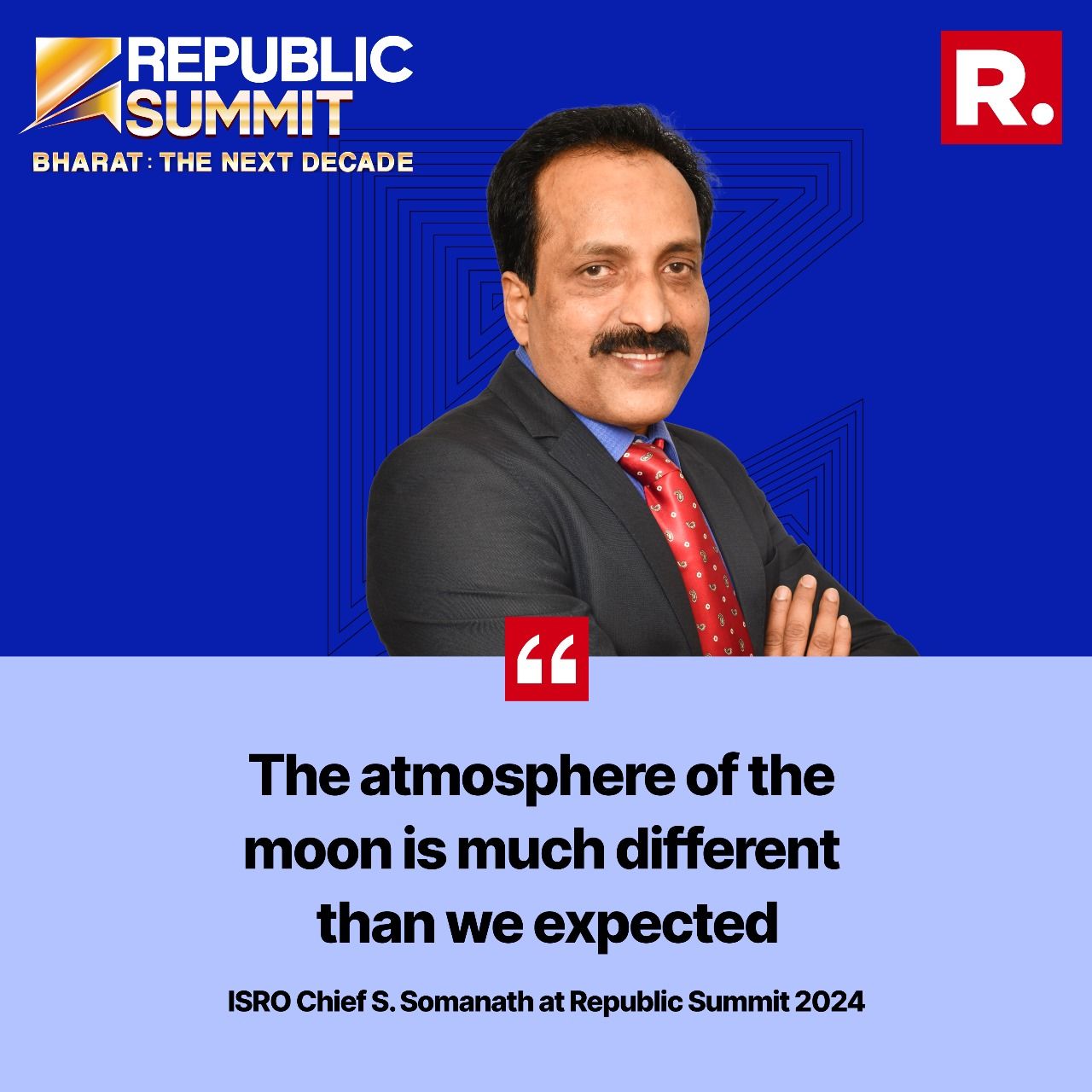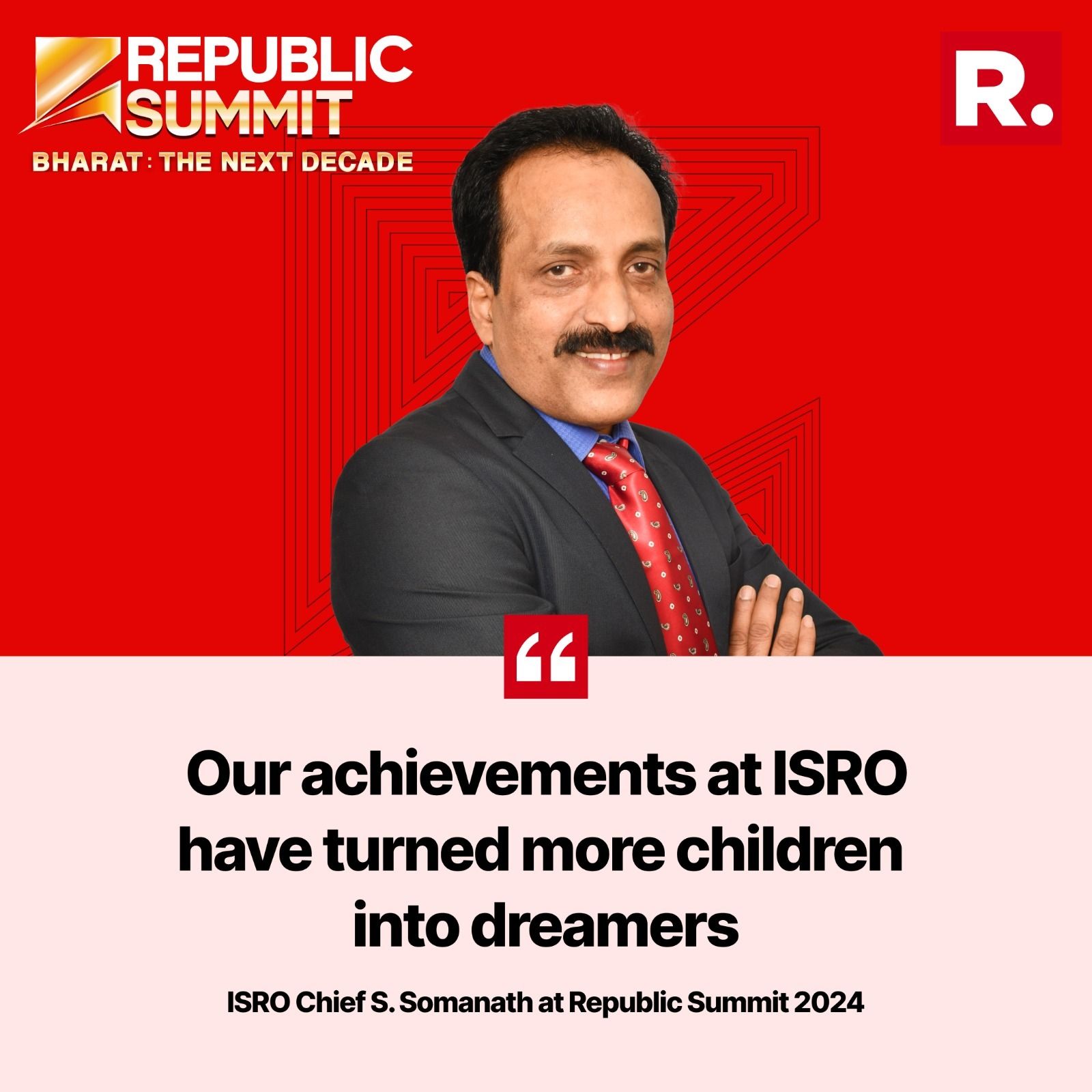Updated March 8th, 2024 at 19:16 IST
Bharat in The Next Decade: ISRO Chief Envisions India's Technological Leap at Republic Summit
S Somanath stated about the vital role of the space sector in agriculture, digital tech, and AI, stressing its contribution to India's overall development.
Advertisement
New Delhi: The Chief of the Indian Space Research Organisation (ISRO), S Somanath, spoke on Thursday at the Republic Summit about his vision of India becoming a technologically advanced nation in the next decade. During his address, he highlighted the important role of the space sector in various fields such as agriculture, digital technology, and artificial intelligence, adding that advancements in the space sector will contribute to India's overall development.
Following this, Somanath commended ISRO's ability to execute missions on a shoestring budget, which experts consider India's capability unprecedented even on a global scale. He also mentioned the Gaganyaan mission, differentiating it from regular rocket launches as it involves human spaceflight. On the Gaganyaan Mission, the ISRO Chief also added that the possible human spaceflight, an ambition that India has intended for a while now, could be launched by 2025. The mission aims to send the four Astronauts designated, who recently received their Astro Wings from Prime Minister Modi during a ceremony at ISRO's Kerala facility, to space and bring them back to India safely.
Advertisement
ISRO Chief on India’s Global Collaborations
However, while underlining the aspiration to launch a human space program, Somanath also noted challenges in technology acquisition, suggesting that it will happen in due time. “It will come at a cost," said the ISRO Chief. During his address, Somanath also touched upon India’s global cooperation, specifically mentioning the collaboration the Indian Space Agency has with NASA along with other leading players in the space sector. “The doctors who are dealing with astronauts in France came to India. They helped us in training and in creating the basic guidelines. And we are now engaging with NASA, and they are going to take one of our astronauts on their flight to the ISS, which will definitely give us some exposure to the way they handle astronauts and then prepare them before the launch,” Somanath added. The four astronaut designates, as per ISRO reports, were also trained in the Yuri Gagarin Centre, the same place where the first Indian astronaut Rakesh Sharma received his training.
Advertisement
Further, as per reports, ISRO will soon, probably by the end of this month, launch the NISAR satellite, which stands for NASA ISRO Synthetic Aperture Radar. When it's launched, it would be the world's first radar imaging satellite to use dual frequencies. The main purpose of the satellite is to observe the Earth's ecosystem, from ice sheets to volcanoes, from earthquakes to landslides, and to help experts understand the very nature of Earth.
ISRO Chief S Somanath Explains Space Economics
Adding to the intrigue, the ISRO chief also mentioned space economics, where he said that 70 percent of the business in the space sector revolves around applications and hardware, with the other 15 percent for building satellites and the rest for launching rockets. However, he did mention that for this particular sector, the investment remains high but returns are very low.
No Dust on Moon? ISRO Chief’s Major Revelation at Republic Summit
Not only that, but the ISRO chief also made a major revelation speaking at the Republic Summit. ISRO chief proclaimed that Following the Chandrayaan mission their (ISRO’s) understanding of the moon differed, as after India became the first country to land near the Lunar south pole, ISRO wasn't able to find lunar ‘dust’ there. He said, "the atmosphere of the moon is much different than we expected".

Somanath while concluding his address said there are “smart minds everywhere in the country, they are not getting the right opportunities, communication is important but needs to expand to villages as well," he added.
Advertisement
Then the ISRO chief spoke about how Chandrayaan 3 was able to access the remote parts of India as well, and how people from rural areas came to know of the feat.

Children in villages were inspired by our work on Chandrayaan, ISRO Chief S. Somanath said, while also adding that ISRO’s achievements have turned more children into dreamers.
Advertisement
Published March 7th, 2024 at 13:45 IST